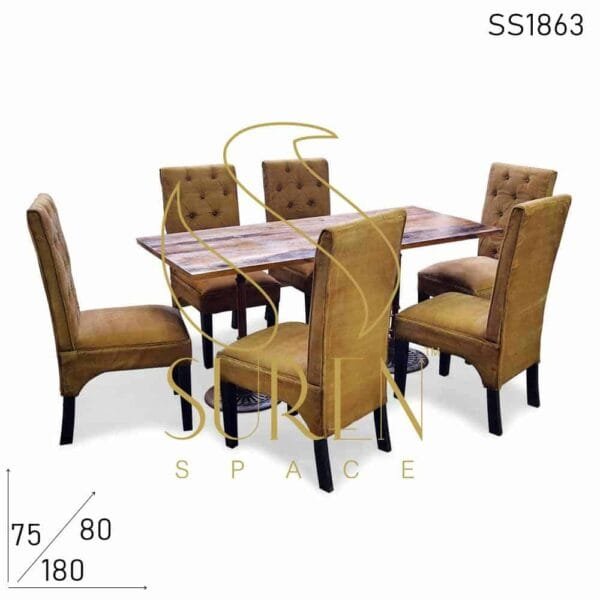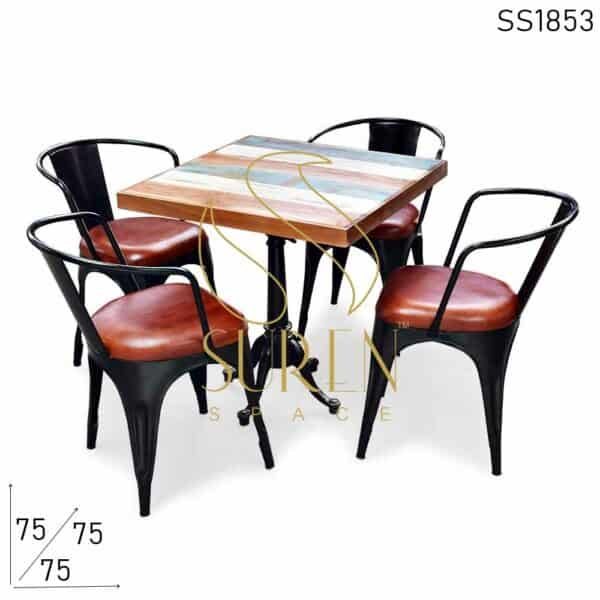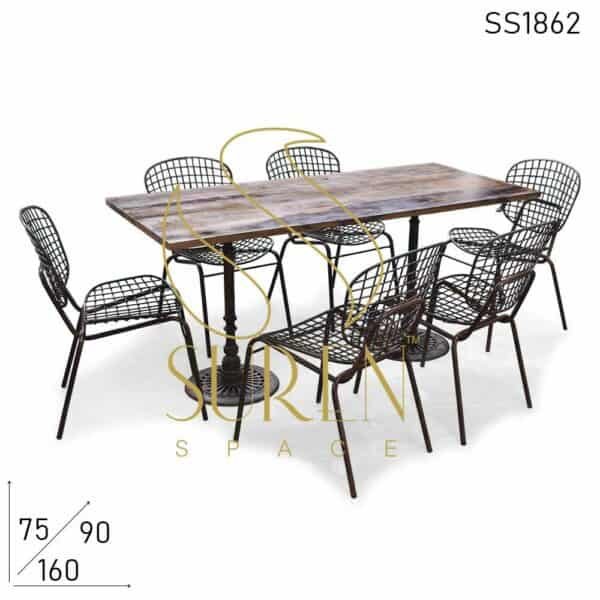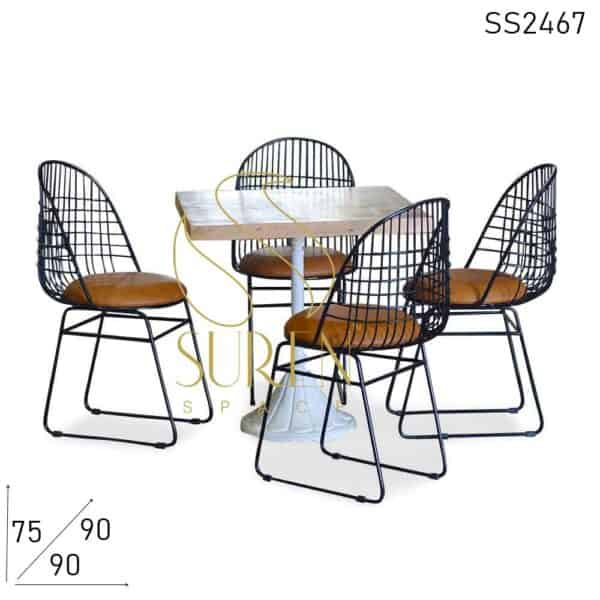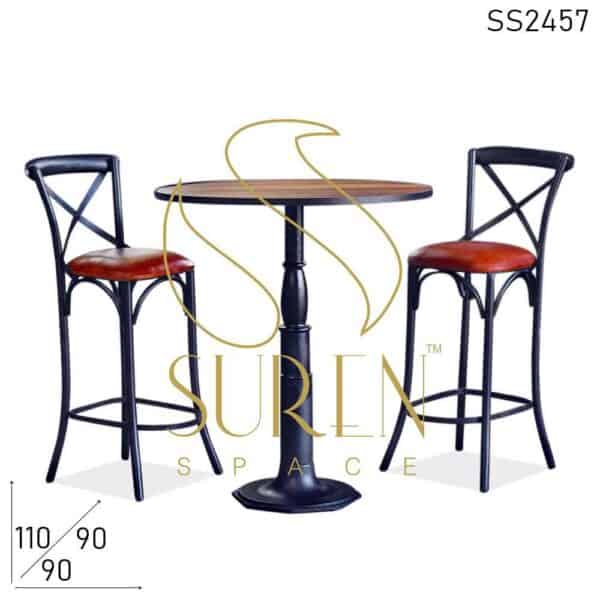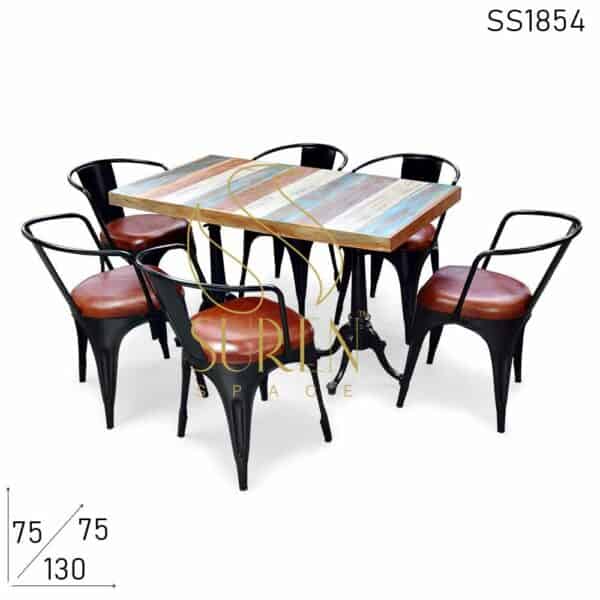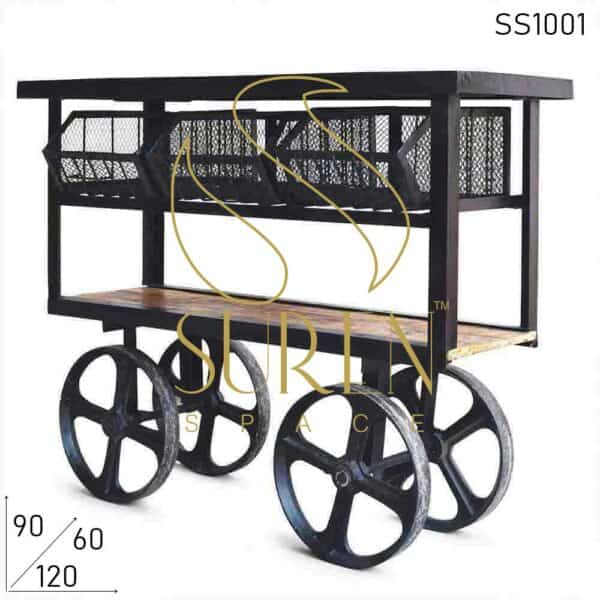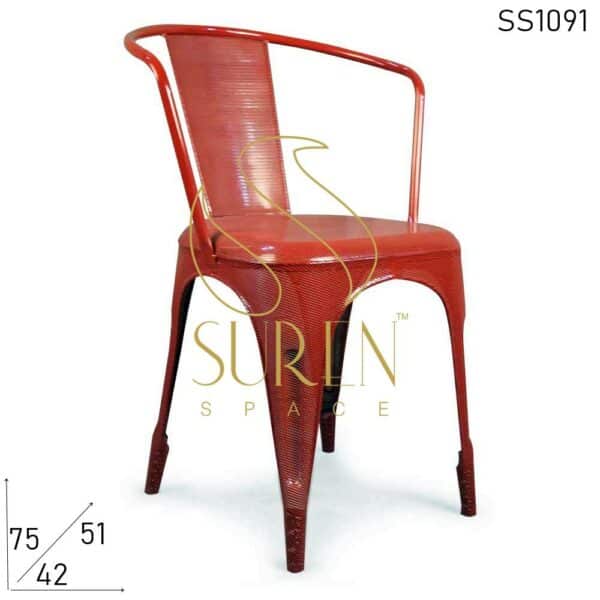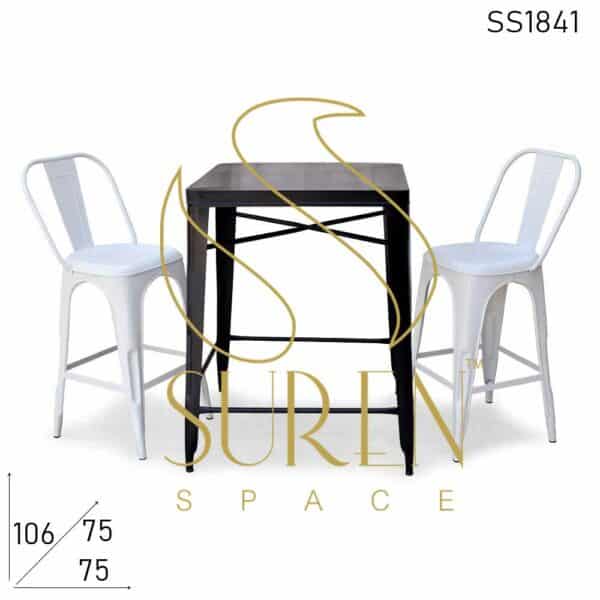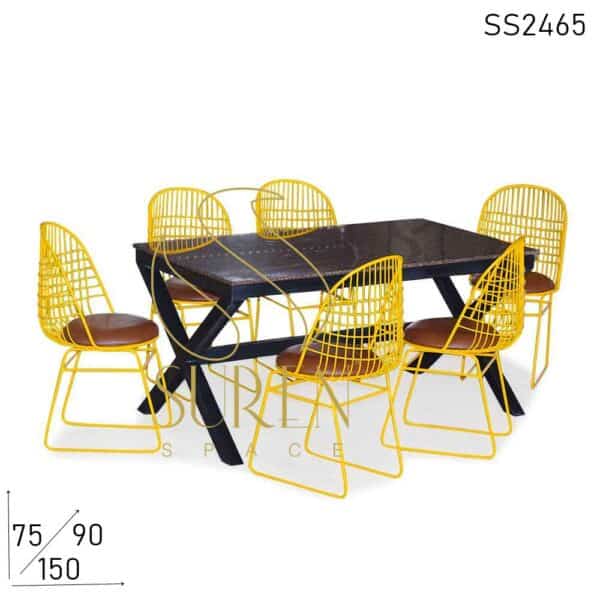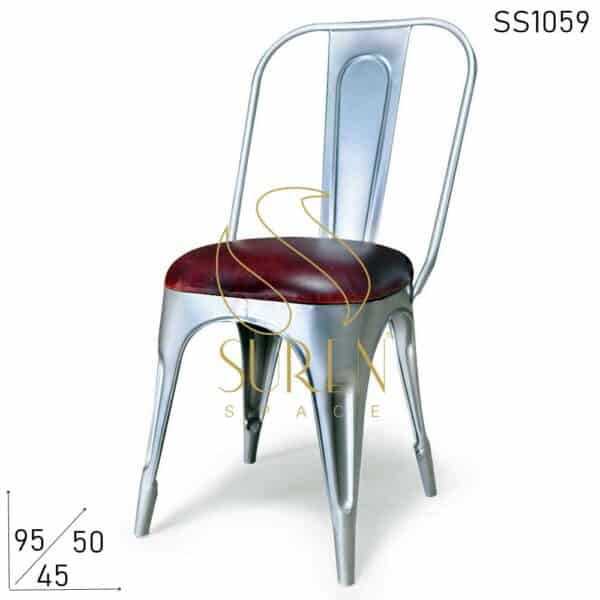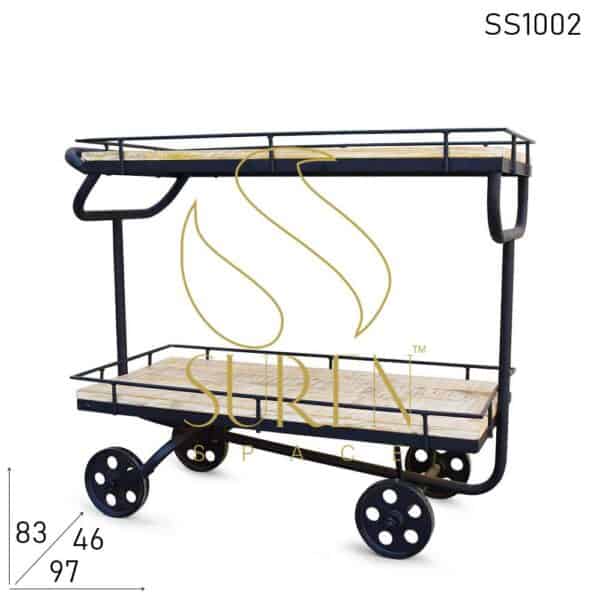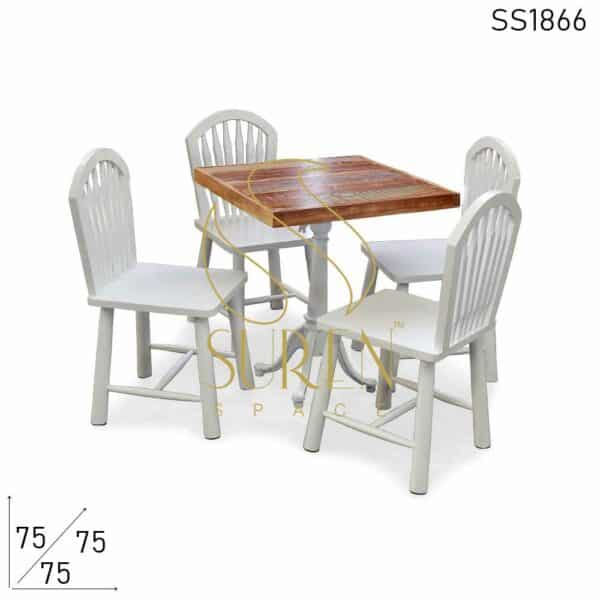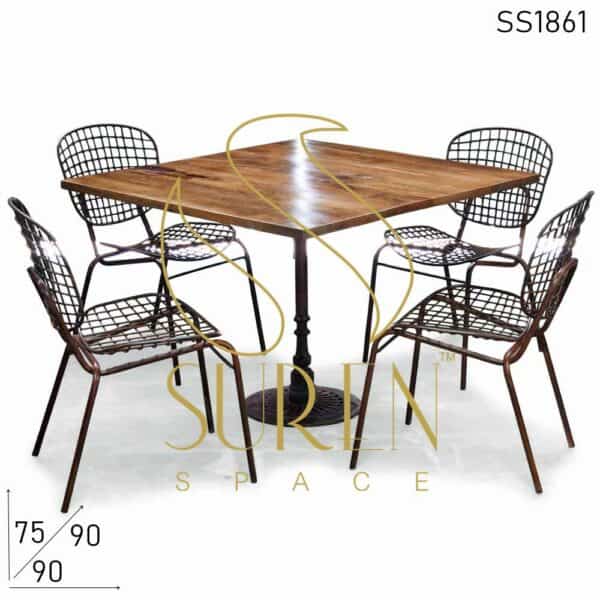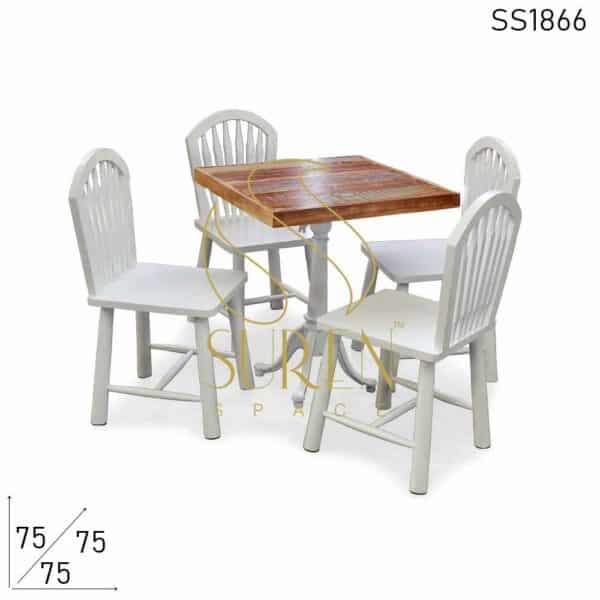Iron Furniture Manufacturer
Did you know that your barbecue grill is probably a gift from an extra-terrestrial? Grills, hammers, nails, cutlery – all have one thing in common: iron. The earliest recorded use of iron was in the making of beads in Mesopotamia (modern day Iraq), around 3200 BC. Where do extra-terrestrials come into the picture?
History of Iron and Iron Furniture
Archaeologists believe that the iron discovered by ancient man, around 5000-3000 BC, was found and extracted from meteorites. Ancient Egyptians called iron the ‘metal from heaven’ and ‘black copper from the sky’, since they harvested it from fallen meteorites. By 1200 BC, iron began to be used in everyday life – from farming implements to weapons of war. The widespread use of iron signalled the start of the Iron Age. By then, techniques to extract iron from iron ore had already been developed in the Middle East. Gradually, ironworking knowledge spread to the rest of the world. Some of the earliest examples of iron casting include the statues outside the Zhongyue Temple in Dengfeng, China, a cast iron pipe used to transport water at the Dillenberg Castle, Germany and cannons in Burgundy and England.
Statues, pipes, cannons – it was a matter of time before iron entered the world of furniture. When it comes to a perfect blend of durability, structure and aesthetics, metal furniture – iron furniture in particular – has always been the popular choice. Iron is a very versatile metal, which makes it ideal for all types of furniture, both indoor and outdoor. The origins of iron furniture can be traced back to the Middle Ages, when iron bedframes became increasingly common. In the early 19th century, the first known piece of iron furniture was a round, three-legged cast iron table, created by German designer Karl Friedrich Schinkel. The 1830s saw a greater variety of iron furniture, from bar and restaurant to garden and patio furniture.
Types of Iron
‘Iron’ is an umbrella term for the various forms of iron that are classified according to their percentage purity, carbon content or intended use.
- Pig Iron – Also known as crude iron, pig iron is obtained directly from the blast furnace. It contains about 5% carbon and other impurities like phosphorus, silicon, manganese and sulphur. This hard and brittle iron is mainly used in the steel manufacturing industry. Did you know how it got its name? The traditional mould used for pig iron ingots was shaped like a central channel with several branches. This resembled a littler of piglets suckling their mother! Hence the name, ‘pig’ iron.
- Wrought Iron – The purest form of iron with only about 0.1% carbon, this metal is very malleable and soft, and at the same time very tough. Once used for building construction, wrought iron is primarily used for furniture making today.
- Cast Iron – Made from pig iron, cast iron is an alloy of iron, with about 2-4% carbon. Brittle, hard and non-malleable, cast iron is used for a wide range of structural and decorative purposes, like columns, balusters, fences, benches, decorative plaques, etc.
Types of Iron Furniture
While iron is present in various forms, the types of iron used for furniture making since ancient times are wrought iron and cast iron. Since cast iron can withstand a lot of wear and tear, it is a popular choice for garden furniture. Wrought iron, being extremely malleable, is associated with intricately designed and low maintenance furniture.
Cast Iron Furniture
The earliest examples of garden furniture can be found in ancient Egyptian civilisation, when taking a leisurely stroll in beautiful gardens was a favourite pastime of the rich. Ornately carved benches also decorated the gardens of the Roman nobles. With the advent of iron – especially cast iron – as the preferred material in the construction industry, cast iron outdoor furniture soon became popular. The famed English gardens, known for their exotic beauty, began to be decorated with opulent cast iron benches, urns and other ornamentation.
The Industrial Revolution saw a rapid increase in the demand for cast iron furniture, which was met by crews of skilled artisans mass producing both indoor and outdoor iron furniture. In the 1840s, the Coalbrookedale Company put Birmingham on the global metal furniture industry map, while August Kitschelt’s tubular iron furniture factory gained worldwide fame. America too saw the emergence of talented iron furniture producers like J.L. Mott in New York and Hanson & Kirk in Philadelphia.
As casting techniques became more advanced, the designs of the cast iron furniture became more intricate. Many erstwhile popular design styles were recreated, like the Rocco Revival designs ( with rustic and natural themes like grape-and-leaf motifs, floral garlands, flower-and-scroll crests, curled handholds, etc.) and the Renaissance Revival and Neoclassical motifs ( like columns and lyres, with antique ornamentation).
Probably the most famous examples of cast iron furniture can be seen in the White House. The world-renowned White House Rose Garden was created by First Lady Ellen Wilson in place of extensive stables for horses and coaches! When Frederick Law Olmstead Jr redesigned the Rose Garden in 1935, he brought in exquisite pieces of cast iron furniture, for visitors to relax and enjoy the lush scenery. The furniture was so unique that the style is still known as ‘White House Rose Garden’ style of furniture.
Wrought Iron Furniture
‘Wrought’ literally means ‘worked on’. An alloy of iron, wrought iron is very malleable and can be extensively worked upon to create the design of your choice. Wrought iron has been around since the 2nd millennium BC in the Anatolian Peninsula (present day Turkey), when it was primarily used for weapons of war. Iron was originally extracted in bloomeries, which produced a porous mass of iron and slag, or waste material. The ‘bloom’ was then ‘wrought’ with a hammer to get rid of the impurities and obtain wrought iron. Bloomeries were used in ancient China as early as 800BC. Other production methods like the Osmond process, Finery process and Puddling process developed much later.
The 19th century saw this versatile iron being used for building construction. Apart from these functional uses, wrought iron has been used for decorative purposes for many centuries now. Intricately carved wrought iron railings, grills, doors and balconies can still be seen in many ancient buildings; the Church screens of the 15th-16th century are prime examples.
Wrought iron furniture became a popular trend during the 18th century. Ornamental garden gates, benches and other garden furniture pieces were created by local blacksmiths and artisans, who were inspired by master furniture craftsmen like Chippendale, Hepplewhite and Sheraton. One of the finest examples of wrought iron furniture is probably the truly remarkable garden collection at Strawberry Hill, the residence of famous art historian and antiquarian Horace Walpole.
Popularity of Iron Furniture
Why is iron furniture – be it cast iron or wrought iron furniture – still so popular today?
- Great style – There is a whole range of designs and styles to choose from. Iron furniture is painted to prevent corrosion, so whatever the décor, your iron furniture is sure to blend in!
- Great for outdoors – Iron can withstand the forces of Nature much better than any other material. That is why it is the ideal choice for patio and garden furniture.
- Durable – Iron is one of the strongest materials used for furniture making. Iron furniture will last for many years, and still look as new as the day it was bought!
- Environment-friendly – One of the greatest advantages of iron furniture is that it can easily be recycled and doesn’t have any negative impact on the environment.
Iron Furniture in India
The use of iron in India dates back to the 2nd millennium BC. Several archaeological sites across the country have yielded iron artefacts ranging from knives and daggers to spoons and saucepans. Greek historian Herodotus was among the first ‘Westerners’ to write about the use of iron in India.
One of the greatest metallurgical wonders of all times is the Iron Pillar near the Qutb Minar at Delhi, India. This Pillar was erected during the reign of Emperor Chandragupta II. The reason for its worldwide fame is that the Pillar, though made of 99% iron, has not rusted after 1600 years!
With such remarkable metallurgical prowess, India has a significant advantage in the global iron furniture industry. Abundant iron ore reserves (fifth-largest iron ore deposit in the world) and skilled manpower have added to India’s competitive advantage. The global market for iron furniture was valued at $141,444 mn in 2020. India’s leading furniture manufacturers are at the forefront of the global industry, catering to the global demand in all types of iron furniture.
One such market leader is Suren Space, a company known for quality furniture, exquisite designs and skilled craftsmanship. Suren Space has a vast range of iron furniture to offer.
-
Wrought Iron
- MS Iron All Weather Patio Chair
- MS Base Granite Round Top Br Pub Table
-
Cast Iron
- Cast Iron Industrial Theme Park Bench
- Cast Iron Adjustable Regular & Bar Height Multipurpose Table
-
Restaurants
- All Metal Solid Frame Outdoor Iron Chair
- Cast Iron Unique Folding Mango Wood Restaurant Table
-
Some other iron furniture items include:
- Metal Natural Finish Mesh Design Iron Cabinet
- Cast Iron Adjustable Drafting cum Console Table
- White Distress Tractor Seat Cast Iron Bar Stool
- Iron Round Shape Pendant Lamp
- Cast Iron Baroque Style Chair
- Cast Iron Folding Rustic Finish Raw Inspire Dining Set
Whatever the setting, whatever the décor, Suren Space’s beautifully designed iron furniture is sure to be the star attraction! Which iron furniture piece will you take home today?


